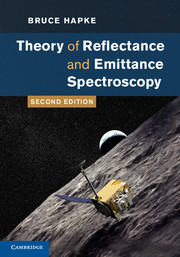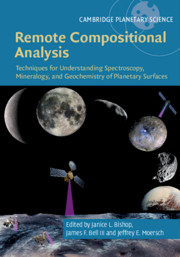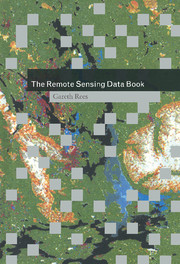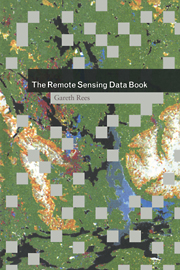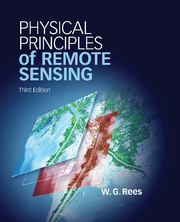Theory of Reflectance and Emittance Spectroscopy
Reflectance and emittance spectroscopy are increasingly important tools in remote sensing and have been employed in most recent planetary spacecraft missions. They are primarily used to measure properties of disordered materials, especially in the interpretation of remote observations of the surfaces of the Earth and other terrestrial planets. This book gives a quantitative treatment of the physics of the interaction of electromagnetic radiation with particulate media, such as powders and soils. Subjects covered include electromagnetic wave propagation, single particle scattering, diffuse reflectance, thermal emittance and polarisation. This new edition has been updated to include a quantitative treatment of the effects of porosity, a detailed discussion of the coherent backscatter opposition effect, a quantitative treatment of simultaneous transport of energy within the medium by conduction and radiation, and lists of relevant databases and software. This is an essential reference for research scientists, engineers and advanced students of planetary remote sensing.
- Gives a quantitative and physical explanation of light scattering and thermal emission by particulate media to illustrate the reflectance and emittance of powders and soils
- Presents an accessible introduction to a key remote sensing technique for modelling surfaces of solid bodies in the solar system
- Provides useful, physically based, analytic formulae, rather than ones that are empirical or results of computer calculations
Reviews & endorsements
'… packed with information … a stimulating and enjoyable read. I encourage any students who read this early in their careers to work through the equations even if they look intimidating, as Hapke does a great job of articulating his logic. For those already familiar with the first edition of this text, it is still a worthwhile read. It centralizes Hapke's pioneering early work with the developments in the almost 20 years since the first edition was published, and the reorganization of chapters and sections results in a more natural, accessible flow.' Rachel Klima, Meteoritics and Planetary Science
Product details
February 2012Adobe eBook Reader
9781139210973
0 pages
0kg
180 b/w illus. 7 tables
This ISBN is for an eBook version which is distributed on our behalf by a third party.
Table of Contents
- Acknowledgements
- 1. Introduction
- 2. Electromagnetic wave propagation
- 3. The absorption of light
- 4. Specular reflection
- 5. Single particle scattering: perfect spheres
- 6. Single particle scattering: irregular particles
- 7. Propagation in a nonuniform medium: the equation of radiative transfer
- 8. The bidirectional reflectance of a semi-infinite medium
- 9. The opposition effect
- 10. A miscellany of bidirectional reflectances and related quantities
- 11. Integrated reflectances and planetary photometry
- 12. Photometric effects of large scale roughness
- 13. Polarization
- 14. Reflectance spectroscopy
- 15. Thermal emission and emittance spectroscopy
- 16. Simultaneous transport of energy by radiation and conduction
- Appendix A. A brief review of vector calculus
- Appendix B. Functions of a complex variable
- Appendix C. The wave equation in spherical coordinates
- Appendix D. Fraunhoffer diffraction by a circular hole
- Appendix E. Table of symbols
- Bibliography
- Index.

